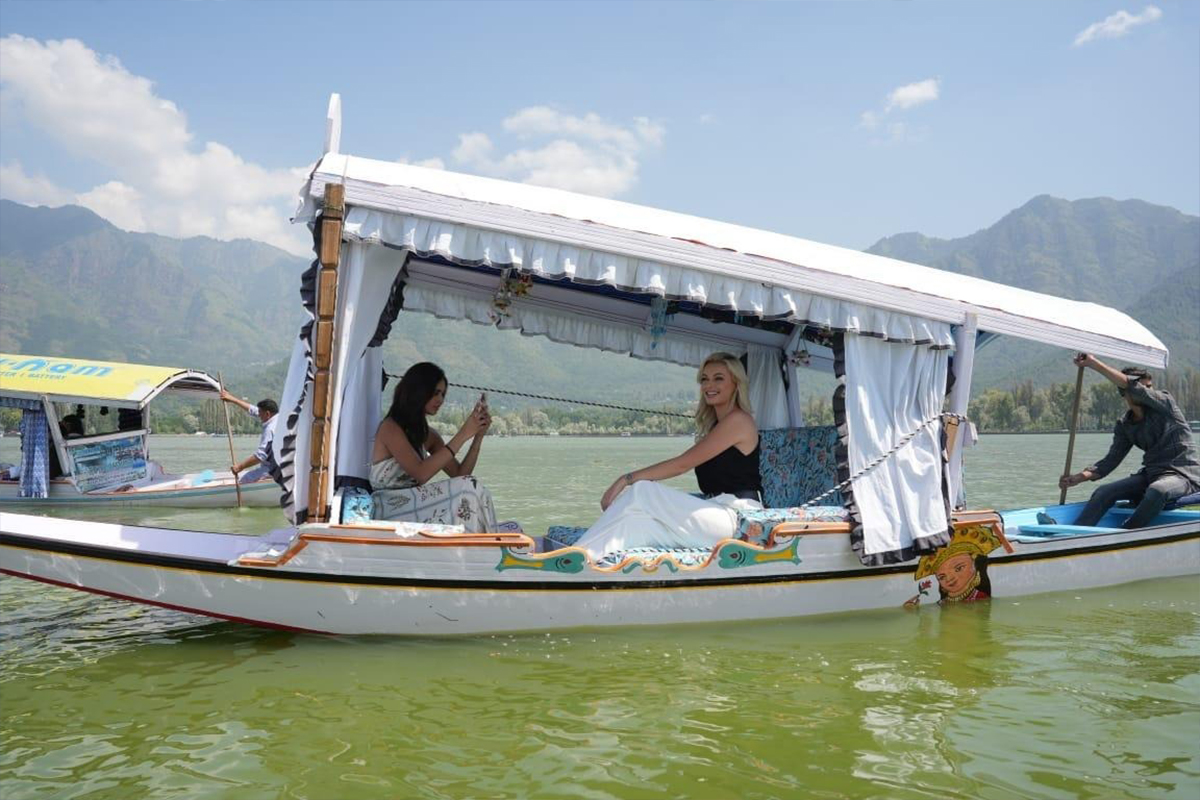Kashmir hasn’t had it this good in decades. The tourism industry is back with a boom to create job opportunities and provide platforms for cultural exchange in a region that hosts diverse linguistic and ethnic communities. Two important events are again putting the global attention towards this important geopolitical region in the last leg of the year 2023.
Miss World Karolina Bielawska recently visited Jammu and Kashmir and expressed gratitude for the warm hospitality her team received in Kashmir, a place she described as “mind blowing”. As a pre-event to the Miss World 2023, Karolina was given a scenic tour. She said Kashmir Valley had all the basic amenities for a world-class holiday.
Having a beauty queen hold a press briefing in Kashmir is like a huge slap to the Islamist forces who dominated the political, economic, religious, and social scene of the Valley since the 1960s well into the new millennium until Article 370 and 35 (A) were scrapped. For Kashmiri women, the 1990s began with the diktats of radical Islamist groups like the JKLF, Hizbul Mujahideen and the Duktaran-e-Millat (women’s wing) enforcing closure of cinema halls, beauty parlours and mandatory veiling. These diktats severely limited career choices for women folk, with performance arts and the tourism industry taking a huge hit. During this period, Kashmiri media got flooded with anti-India and anti-Hindu journalists who were biased in their approach to insurgency and ethnic cleansing of Pandits in the Valley.
READ MORE: Dear Mehbooba Mufti, get enrolled in a science course
The 2019 Constitutional changes have brought such massive transformation that the youth and women are today signing up for music festivals, acting and modelling careers, and fine arts. They are thriving in the beauty industry with cosmetology courses and startups of clothing lines and boutiques. Cinematographic locales, film shoots, production units are again seen in the Valley as Bollywood revives the beauty of the Valley in their movies. In this backdrop, the global attention on the beauty queen’s Kashmir tour is mind-boggling for the average Kashmiri.
July and August also mark the start of the Amarnath Yatra, an annual pilgrimage to the holy cave of Amarnath situated at an altitude of about 3,888 meters (12,756 feet). The yatra is usually conducted during the summer months, when the ice Shiva Lingam is naturally formed inside the cave due to freezing temperatures. Due to the difficult conditions and high altitude, the yatra requires careful planning and safety measures.
The yatra was often targeted by terror groups in their xenophobic policy of keeping non-Muslims and non-state subjects out of the Valley. A particular bloody Yatra in 2001 in Pahalgam, is entrenched in our memory, when terrorists targeted poor stall owners looking to do some business of woollens, and eatables on the pilgrimage route. This was in line with the ethnic cleansing of Pandits (indigenous Hindus) in the 90s, through a terror pogrom which included assassinations, distress sales, desecration of temples and an unwritten ban on Hindu religious festivities and processions.
READ MORE: Kashmir’s Independence Day celebrations come full circle
Much to the credit of LG Manoj Saxena’s administration, this year’s yatra has been incident-free, which has encouraged officials to earmark another 75 tourist destinations to boost religious tourism. The record inflow of tourists, 1 crore in 2022, has added to the confidence.
However, what needs to be remembered in the enthusiasm for development is that the region’s fragile Himalayan ecology remains protected through responsible travel practices that promote environmental conservation, support local communities, and minimize negative impacts. While tourism brings numerous benefits, it can also pose challenges such as over-tourism (excessive crowding in popular destinations), environmental degradation, cultural exploitation, and uneven distribution of economic benefits.
After three decades of proxy war which got two generations into the ground, India has won the battle for Kashmir, but the larger war is far from over. The peace must be made everlasting, considering Islamist forces always bide their time, to wait for opportunities to arise whether out of geopolitical moves like the New Great Game or economic instability, so that insidiously another armed insurgency can repeat history. That is the war that needs to be fought on all fronts in the 21st century.

